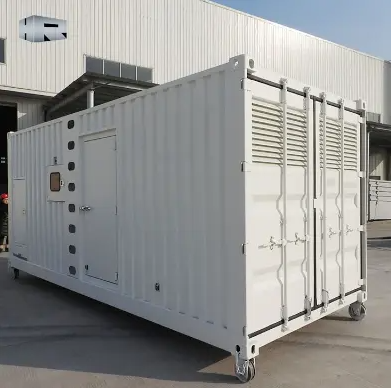
Designing a custom shipping container can be a fun and creative project. Whether you're looking to create a unique home, office, or retail space, here are some top tips to keep in mind:
1. Define your purpose: Before you start designing your custom shipping container, it's important to have a clear understanding of what the container will be used for. This will help guide your design decisions and ensure that the final product meets your needs.
2. Consider your space limitations: Shipping containers come in standard sizes, so you'll need to work within these constraints when designing your custom container. Make sure to measure the space you have available and plan your layout accordingly.
3. Incorporate natural light: Shipping containers can feel dark and confined, so it's important to find ways to bring in natural light. Consider adding windows, skylights, or glass doors to help brighten up the space.
4. Insulate for comfort: Shipping containers are made of metal, which can get very hot or cold depending on the weather. It's important to insulate your container to create a comfortable living or working environment. This will help regulate the temperature and reduce energy costs.
5. Think about ventilation: Proper ventilation is essential for a healthy and comfortable living or working space. Make sure to plan for vents or air conditioning to keep the air circulating and fresh.
6. Plan your layout: When designing your custom shipping container, think about how you want to arrange the different areas of your space. Consider your workflow or daily activities and plan the layout accordingly for maximum efficiency.
7. Choose durable materials: Shipping containers are designed to withstand harsh conditions during transportation, so they are already quite durable. However, if you're converting a container into a living or working space, you may want to consider upgrading the materials to ensure long-lasting durability.
8. Consider sustainability: Shipping containers are a sustainable building material, as they can be repurposed and reused. When designing your custom container, consider incorporating sustainable features such as solar panels, rainwater collection systems, or energy-efficient appliances.
9. Customize the exterior: Shipping containers can be painted or clad with different materials to give them a unique look. Consider adding a pop of color, mural, or branding to make your container stand out.
10. Work with a professional: Finally, if you're not sure where to start or need help bringing your vision to life, consider working with a professional designer or architect who has experience with shipping container conversions. They can help guide you through the design process and ensure that your custom container meets your needs and aesthetic preferences.
With these top tips in mind, you'll be well on your way to designing a custom shipping container that is functional, comfortable, and visually appealing. Happy designing!




Komen
(0)